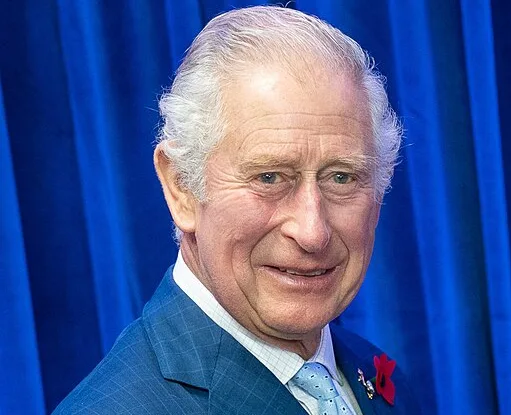King Charles III’s portrait features on new banknotes, gradually replacing old ones
New banknotes featuring the portrait of King Charles III have started to enter circulation, marking a significant change in British currency. However, it may take some time before these notes are commonly seen in wallets and purses. The new Bank of England notes will replace damaged ones or be issued as demand increases. King Charles is only the second monarch to appear on these notes, following Queen Elizabeth II, who first appeared in 1960.
Currently, the reverse sides of the polymer Bank of England banknotes, which feature Sir Winston Churchill, Jane Austen, JMW Turner, and Alan Turing, remain unchanged. Banknotes issued in Scotland and Northern Ireland do not feature the monarch.
Embed from Getty ImagesThe first of these new banknotes was printed months ago to allow automated machines that accept cash to be updated with the new designs. The King’s portrait is based on a photograph taken in 2013. Last year, the BBC gained exclusive access to the secure site where these notes were produced. A year later, King Charles received a full set with the lowest serial numbers, following tradition.
As cash continues to play an essential role for many, despite the increasing trend toward a cashless society, the Bank of England remains committed to providing banknotes as long as there is demand. A survey by Link, the UK’s cash access and ATM network, found that nearly half of the respondents expect a cashless society during their lifetime, though the same proportion believes this would be problematic. Seventy-one per cent of those surveyed still rely on cash daily.
Yet, access to cash is becoming more limited. Figures from the consumer association Which? revealed that 6,000 bank branches had closed over the past nine years. This has left many areas with no bank branches and limited cash access. In response, fifty banking hubs have been established, offering shared premises where customers of any bank can withdraw and deposit cash.
One such hub is in the picturesque town of Looe in Cornwall, a county with rich connections to King Charles. The Looe Banking Hub, located behind a cafe and heritage centre, serves as a lifeline for the community. Debbie Young, the hub manager, emphasizes its importance for local businesses and residents who need to pay bills and top up utilities. Ange Harrison, who manages the coffee shop in front of the hub, highlights the necessity of such services in areas with poor internet connectivity and concerns about online scams.
While the introduction of King Charles’s image on banknotes signifies a slow transition, the future of physical currency remains uncertain. The evolution of cash in the UK continues alongside technological advancements and changing consumer habits.
Analysis
Political Impact: The introduction of King Charles III’s portrait on banknotes symbolizes a shift in the UK’s monarchy representation, reflecting the current reign’s influence on everyday items. This change, while primarily symbolic, underscores the continuity and adaptability of the monarchy in modern times. Politically, it reinforces the monarchy’s presence and its subtle influence on British cultural identity.
Social Reflection: The new banknotes serve as a reminder of the nation’s respect for tradition and continuity. The gradual transition from Queen Elizabeth II to King Charles III on currency reflects societal acceptance of change within the monarchy. It also highlights the public’s enduring connection to royal symbols, which are deeply embedded in British society.
Psychological Aspect: Psychologically, the appearance of King Charles III on banknotes may evoke a mix of nostalgia and acceptance among the public. For many, it marks the end of an era dominated by Queen Elizabeth II’s long reign and the beginning of a new chapter. This change can foster a sense of renewal and continuity, reassuring citizens of the monarchy’s stable presence.
Sociological Angle: The shift to King Charles III’s image of currency may reinforce social cohesion by linking past traditions with the present. It illustrates how societal values evolve while maintaining respect for historical continuity. This evolution in currency design also reflects broader societal changes and the public’s adaptability to new symbols of authority.
Fashion Culture: While the banknotes themselves are not fashion items, the broader cultural significance of featuring King Charles III on everyday objects can influence trends in collectables and memorabilia. Collectors and enthusiasts may seek these new banknotes, especially those with low serial numbers, as valuable additions to their collections. This interest can extend to other areas, such as stamps and coins, where the King’s image is also featured.
